Episode 03 - The Venetian Takeover of England: A 200-Year Project
Episode 05 - Bestial British Intelligence Of Shelburne and Bentham
Episode 07 - Palmerston Launches Young Turks to Permanently Control the Middle East
Episode 09 - Jim Crow, a Cultural Weapon in the Hands of the Confederacy
🌍 Jim Crow: A Cultural Weapon of Entrenched Power
The Jim Crow system did not originate in legislation but in a deliberate campaign to shape public opinion and societal norms. Emerging from the 1820s minstrel shows, Jim Crow was a caricature mocking and demeaning Black Americans. Over time, it evolved into a vast network of political, legal, and social structures designed to limit the roles and rights of African Americans. More than just a series of laws, Jim Crow became a deeply entrenched ideology that used cultural narratives to sustain racial hierarchy, spreading the notion of African American inferiority through song, theater, and eventually film.
🇬🇧 British Influence: Global Forces Behind American Racial Policies
Jim Crow did not thrive solely from internal motivations; it found support in international interests, especially British imperial ambitions. Britain, with its global empire, encouraged divisive racial policies in America as a means to weaken a powerful potential rival. By supporting Confederate ideologies that fostered racial divides, Britain reinforced societal fragmentation, allowing it to maintain indirect control and prevent the U.S. from becoming a consolidated global power.
📜 Post-Civil War Gains and the 1876 Reversal
Following the Civil War, America saw a brief period of progressive legislative reform in the South, which included public education and voting rights for African Americans. Southern legislatures, newly empowered with African American representatives, championed policies that expanded rights and inclusivity. Yet, the 1876 Hayes-Tilden Compromise resulted in the withdrawal of Northern support for Reconstruction, allowing Confederate sympathizers to regain control. Rights that had been won were quickly stripped away as Jim Crow laws reinstated racial segregation, undoing many advancements of the post-war era.
🔬 Pseudo-Science and ‘Race Science’ as Justifications
The Jim Crow ideology permeated academic fields, manipulating early sciences like anthropology and sociology to justify racial hierarchies. Exhibitions like the St. Louis World’s Fair in 1904 displayed people from various races as “primitive,” reinforcing public acceptance of racial hierarchy. The Bronx Zoo even caged a Congolese man, Ota Benga, with monkeys, falsely framing him as a “missing link” to justify segregation as “natural.” Scientific institutions thus endorsed and legitimized dehumanization, casting racial oppression as an extension of “scientific truth.”
🎥 The Influence of Film and Media in Shaping Stereotypes
In 1915, Birth of a Nation presented Black Americans as violent and inferior, glorifying the Ku Klux Klan as protectors of white society. This film cemented stereotypes that portrayed African Americans as inherently dangerous or incapable, embedding them into American culture. These reductive images became widely accepted, shaping societal attitudes and making it difficult for African Americans to be seen outside of narrow, prejudiced roles.
🎭 Modern-Day ‘Multiculturalism’ as High-Tech Stereotyping
The Jim Crow mentality continues to manifest in more subtle forms today. Modern “multiculturalism” often perpetuates stereotypes under the guise of celebrating diversity, trapping African American youth in limited roles from a young age. Surveys reveal that Black students continue to view themselves through these racialized filters, unknowingly perpetuating the biases inherited from Jim Crow. This form of “high-tech” stereotyping confines identities in ways that mirror past mentalities, updated for contemporary settings.
✊🏿 Resistance Against Stereotyping and the Push for Equality
Despite the oppressive forces behind Jim Crow, leaders like Frederick Douglass, Martin Luther King Jr., and others rose to challenge these constraints. King, in particular, envisioned an America where freedom and equality were universal. His civil rights activism opposed the Jim Crow framework, focusing on humanity’s shared dignity and worth. King’s message urged the nation to see beyond race and dismantle the legacy of division Jim Crow enforced.
🔗 Legacy of Jim Crow: America’s Path Forward
Jim Crow’s impact remains visible today, influencing attitudes and societal norms that often reinforce racial division. The challenge facing America lies in whether it will continue defining itself by outdated, segregated identities or move toward a truly egalitarian future. Confronting Jim Crow’s lingering effects requires recognizing the shared humanity that unites people beyond racial and ethnic divisions, fostering a future based on equality and justice.
🌌 Choosing Unity Over Division: Humanity’s Next Steps
At this pivotal moment, society faces a choice: to either build a future grounded in unity, scientific progress, and equality, or to continue divisive practices that limit human potential. The legacy of Jim Crow warns of the destructive power of division. True democracy and freedom require a rejection of divisive mentalities, fostering a unified identity that celebrates every person’s worth equally. Embracing shared humanity over artificial constructs of identity can lift the shadows of Jim Crow, moving America closer to realizing a future where justice and equality become lasting realities.
📅 Timeline of Key Events in “Jim Crow: A Cultural Weapon of Entrenched Power”
1820s
Origins of “Jim Crow”: The Jim Crow character is created in minstrel shows by white actor Thomas Rice, who mocks Black Americans through exaggerated, demeaning caricatures. This stereotype takes root in American culture, setting the stage for later institutionalized racial oppression.
1863
Emancipation Proclamation: President Abraham Lincoln issues the Emancipation Proclamation, declaring freedom for enslaved people in Confederate territories and laying groundwork for future rights.
1865
End of the Civil War and the Start of Reconstruction: The Confederacy is defeated, and the 13th Amendment formally abolishes slavery. Reconstruction efforts begin, aimed at rebuilding the South and ensuring equality for African Americans.
Assassination of Abraham Lincoln: Lincoln is assassinated, an event that the text argues prevents the solidification of Civil Rights advancements achieved during Reconstruction. With Lincoln gone, forces opposed to equality seize the opportunity to undermine Reconstruction.
1866–1871
Reconstruction Gains: Radical Reconstruction legislatures in the South, including African American representatives, pass transformative laws promoting voting rights, public education, and legal protections for African Americans. Southern legislatures create some of the most inclusive policies in American history, fostering significant progress.
1876
Hayes-Tilden Compromise: This political agreement effectively ends Reconstruction by withdrawing federal troops from the South. Without federal protection, Southern states soon fall under the control of those seeking to reverse Reconstruction gains.
1880s–1890s
Enforcement of Jim Crow Laws: Southern states enact Jim Crow laws that enforce strict segregation and disenfranchise African Americans, systematically dismantling the advances made during Reconstruction and embedding racial subordination into law and daily life.
1904
St. Louis World’s Fair and Pseudoscientific Racism: Racial pseudoscience is promoted widely as exhibits display non-white individuals as “primitive” to reinforce the perceived racial hierarchy and justify segregation.
1905–1906
Ota Benga Exhibit at the Bronx Zoo: Ota Benga, a Congolese man, is displayed in a cage, a grotesque spectacle that exemplifies the racial hierarchy promoted by eugenics, further solidifying the ideology that underpins Jim Crow.
1915
Release of Birth of a Nation*: This film portrays African Americans as dangerous and morally inferior while glorifying the Ku Klux Klan. It fuels racial animosity, encourages support for the Klan, and helps justify ongoing Jim Crow policies.
1924
Immigration Restriction Act: Under the influence of eugenics, the United States restricts immigration from non-Nordic countries, further institutionalizing racial and ethnic exclusion.
1930s
Eugenics Advocacy in America: Prominent institutions like the Museum of Natural History promote eugenics, including hosting Nazi race scientists, which reinforces the ideologies supporting racial segregation and Jim Crow.
1950s–1960s
Civil Rights Movement: Leaders like Martin Luther King Jr. spearhead efforts against Jim Crow, calling for a unified society that rejects the segregation and stereotypes imposed by Jim Crow laws.
1964
Civil Rights Act: This groundbreaking law outlaws racial discrimination, formally dismantling the legal framework of Jim Crow, though its societal impacts linger.
Present Day
Enduring Legacy of Jim Crow: While Jim Crow laws have been abolished, their cultural and psychological impact remains deeply ingrained, with lasting effects on American identity, stereotypes, and institutional practices.
Palmerston’s Zoo Series
For the past 30 years, media and academia have largely ignored the groundbreaking lectures presented at the President's Day 1994 Schiller Institute and International Caucus of Labor Committees conference. Yet, they contain some of the most vital historical insights for anyone seeking to understand the forces shaping today's world. "Palmerston's Zoo" is a deep exploration into the intricate workings of British imperialism—revealing the key figures, strategies, and philosophies behind its shadowy influence over global politics. This series brings together eight distinct but interwoven narratives that expose the power structures, manipulations, and covert operations that have determined the course of world history.
The Duke Report presents this podcast as an opportunity to breathe new life into these timeless analyses, giving listeners a comprehensive perspective connecting past imperial strategies and present-day geopolitics. The impact of these lectures is staggering, providing crucial context for understanding current events—a context that has never been widely disseminated through mainstream academic or media channels. The insights offered here are not just historical; they are the key to unlocking the deeper narrative of how global influence operates, making this possibly the most important history lesson for 21st-century humans. Join us on a journey that defies conventional narratives, challenges accepted truths and provides an essential map to navigate the complexities of modern power.
Links to authors and sources:
Let me know if anyone has been left out


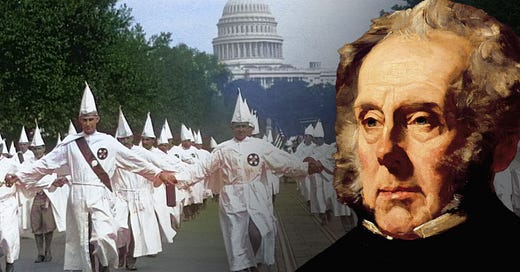



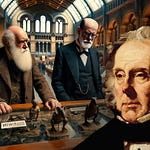

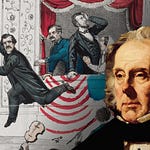


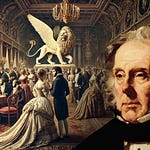
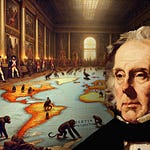
Share this post